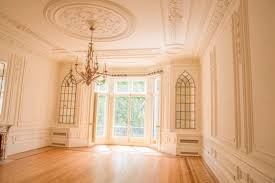
The lush hills, sprawling waterfalls, sparkling blue water bodies and deep woods are the themes of many spectacular tourist spots. But, sometimes change is welcome and my town Jamshedpur provides exactly that with Amadubi rural tourism centre. Never heard that name? Mostly because it hasn’t garnered the attention it deserves but once you visit it, you’ll find it doesn’t pale in comparison to some of its African counterparts. It is a treat for both the anthropologist
and the wanderer inside you.
The Amadubi Rural tourism centre is located some few kms from Jamshedpur. And here’s why you should really plan a visit there the next time you are in the town:-
- The Art
The moment you enter the centre, a beautiful assortment of pyatkar paintings are waiting to greet you. You are taken back to the world of the great epics as you see the eco-friendly huts, with artistic borders and wall paintings. The pyatkar art is a staple of these ‘chitrakars’ who painted on scrolls.
- The History
The history of the place would fascinate the history geeks. In 1767, Dhalbhum and Ghatsila region were attacked by the British army in confederation woth the Raja of Midnapore. John Fergusson attacked Ghatsila from Jambuni and successfully defeated the local king after destroying the Narsingarh fort. The king was deported, and throne was captured by his nephew Jagannath Dhal on the promise of paying Rs. 55,000 to the British government. Unfortunately, Dhal couldn’t bear the burden of the price following which Bhaikund Dhal was made the king. In retaliation, Jagannath attacked the king and the kingdom was reinstated to him on the condition that he would pay Rs 2000 as tax in his first year.
If this fascinating history isn’t enough to lure you in, the palace of the Dhalbhum Raja known as Rajbari will.
- The Tradition and the culture
Like many other tribes, this place also has its own traditions and with the arrival of the festive season, it lightens up with performances.
Gona,karma, sohrai,Dasai and Tusu are the various festivals that are celebrated with tribal dances and rituals. The festivals are celebrated to mark an agricultural occasion with lyrical music and rythmic dances to the beats of Mander and Dhol. The festival season is to continue traditions and to express gratitude for inheriting a beautiful heritage with food and pageantry.
Village tourism is bindsdiverse rural culture together.
- Tribal craftsmanship
Pyatkar Painting Scroll on cloth/paper, framed in bamboo, Dokra or Teak wood frame will beautifully complement the items on your mantelpiece.
The kurtas & kurtis, cushion covers & a variety of useful items with imprinted tribal art is worth a watch and definitely worth a buy.
The Tasser/Silk Scarfs, shawls and Dokra crafts are highly demanded souvenirs as well.
- Festive Season specials
Jomnamah
During September-October, as the first crop
is ready for harvesting in the month of September Jomnamah is celebrated. On this occasion the first harvested crop is cashed in every house.
Sarhul
During February-March Sarhul (Baha) is celebrated with flowers of Saal tree (Baha is a flower) by men and women. It marks the beauty of nature during March when trees in the forests are covered with flowers.
Visiting the place at this time is a treat for the eyes.
- The food
Delicious tribal food abounds in this place Zil – Pitha,Ud – Pitha,Gud – Pitha,Arsa – PithaSerro, Leto, Pata Lod. These original delicacies will leave you craving for more.
Thus, Amadubi rural tourism centre is a relatively undiscovered tourist paradise that has something for everyone be it a history geek, an anthropologist, an art lover, a foodie or a wanderer. This is the specialty of this place that sets it apart from most tourist spots.
Author: Eshaduti Dey


